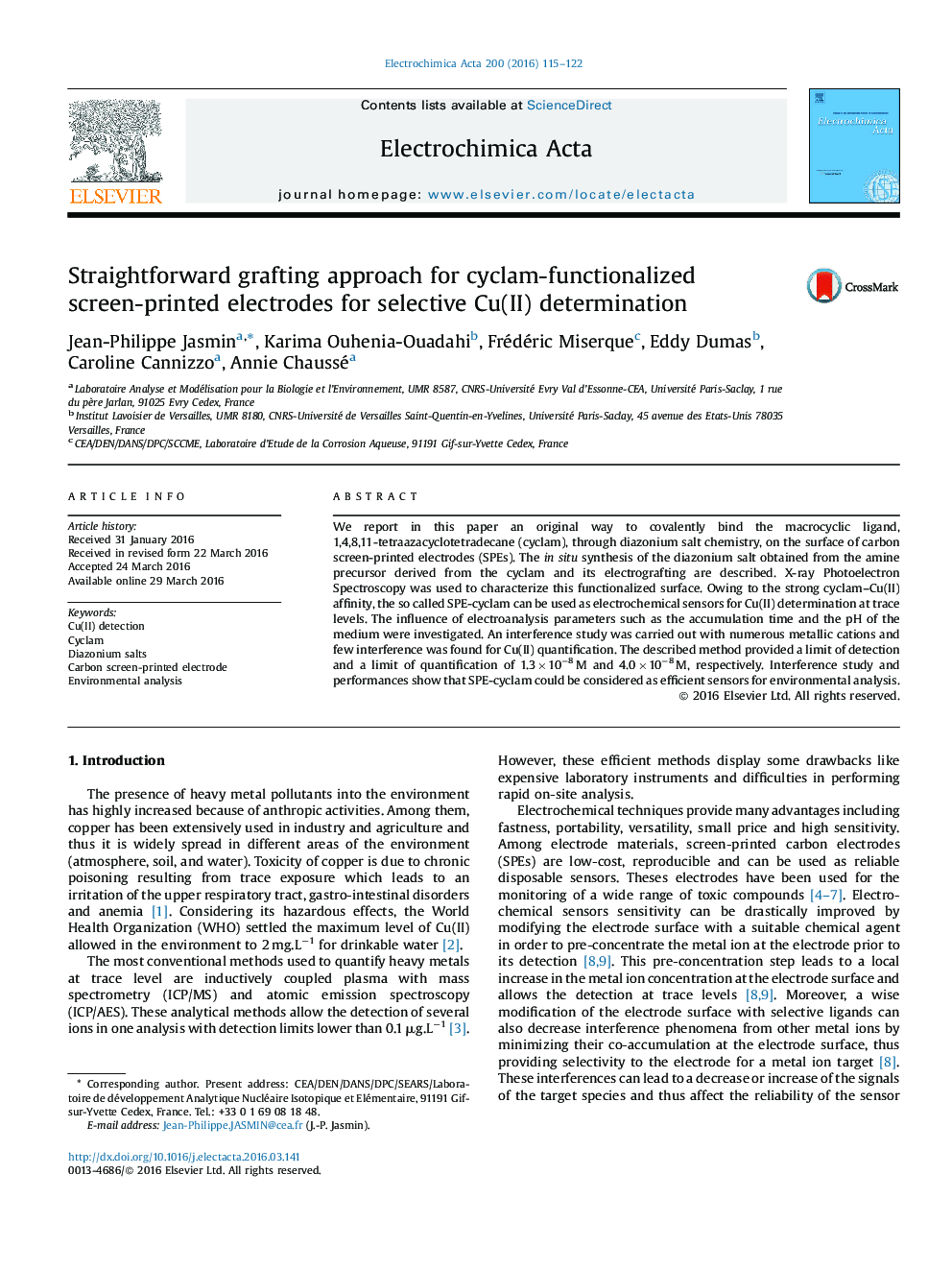| Article ID | Journal | Published Year | Pages | File Type |
|---|---|---|---|---|
| 183166 | Electrochimica Acta | 2016 | 8 Pages |
We report in this paper an original way to covalently bind the macrocyclic ligand, 1,4,8,11-tetraazacyclotetradecane (cyclam), through diazonium salt chemistry, on the surface of carbon screen-printed electrodes (SPEs). The in situ synthesis of the diazonium salt obtained from the amine precursor derived from the cyclam and its electrografting are described. X-ray Photoelectron Spectroscopy was used to characterize this functionalized surface. Owing to the strong cyclam–Cu(II) affinity, the so called SPE-cyclam can be used as electrochemical sensors for Cu(II) determination at trace levels. The influence of electroanalysis parameters such as the accumulation time and the pH of the medium were investigated. An interference study was carried out with numerous metallic cations and few interference was found for Cu(II) quantification. The described method provided a limit of detection and a limit of quantification of 1.3 × 10−8 M and 4.0 × 10−8 M, respectively. Interference study and performances show that SPE-cyclam could be considered as efficient sensors for environmental analysis.
